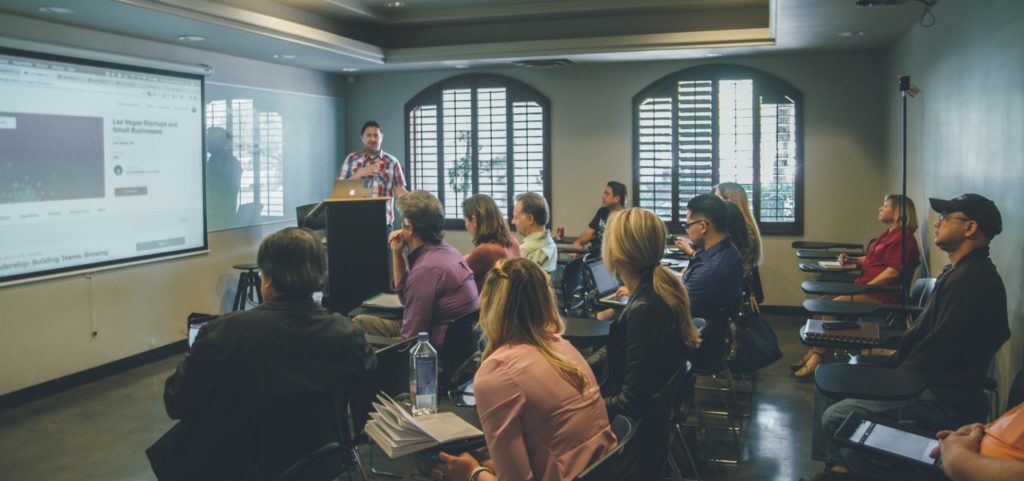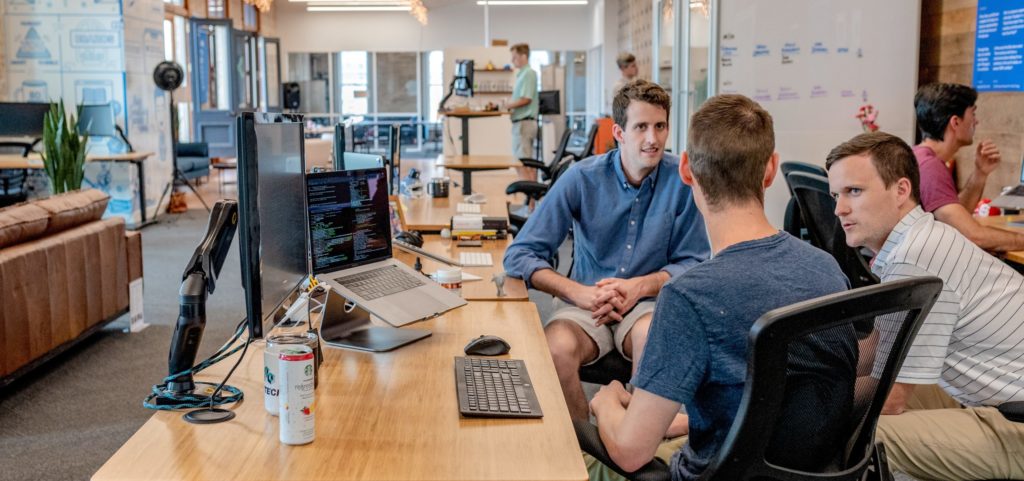The Value of Active Learning: Higher Education
Students who are active and engaged in class are more likely to excel academically—and find work after graduation. They also form stronger bonds with teachers and peers and retain more knowledge.
As educators, how can we maintain participation and engagement across diverse learners?
Active learning is one powerful solution. This strategy gets students from all backgrounds thinking critically, collaborating, and learning about meaningful real-world topics.
This article will discuss active learning and why it’s so beneficial. We’ll then offer some strategies you can use to apply the approach effectively in your classroom.
What is the active learning process?
Active learning is a teaching technique that engages students in the learning process, involving them in solving problems and generating knowledge. It is widely used in primary, secondary, and higher education because of its effectiveness compared to traditional methods like lecture-based instruction.
Through active learning, higher education institutions aim to engage learners in acquiring knowledge rather than presenting them with information. This approach benefits both teachers and learners because it fosters increased understanding and retention of class topics and materials whilst allowing students to generate new ideas and apply knowledge during class time.
Creating excitement about active learning approaches is easy through activities like:
- Case studies
- Group projects
- Debates
- Class discussions
- Role-play
- Game-based learning
An important element of active learning activities is collaboration and involving students working together to explore and review topics. This process can be a comprehensive measure to help students identify their own knowledge gaps and build critical interpersonal skills necessary for success after graduation.
What are the key principles of active learning?
There are no set guidelines for active learning, but we can identify some key principles that will help you get the most out of this approach.
- Meaning and relevance: The educational content must hold some personal meaning for each student and be relevant to real-world scenarios and complexities.
- Groupwork: Generally, students will work as a group to negotiate goals, identify knowledge gaps, and evaluate content.
- Critical reflection and analysis: Students will critically evaluate their approach to understanding the topic and look for possible gaps. They will also analyse and reflect on the meaning of their learning.
- Engaging content: The content must be engaging and interesting to each student. Meaningful, timely, and relevant content is generally more engaging, especially when students can explore the information in their own learning style.
What is active learning in higher education?
Active learning activities in higher education are similar to those in other educational settings, although outcomes are more job-focused. The general goal is to instil crucial 21st-century skills like active learning and participation, differing greatly from traditional lecturing.
Class discussions are a common form of active learning used in universities and higher education institutions around the globe. The Socratic Method is a popular approach that involves a teacher asking probing questions to stimulate deeper thinking and require students to draw out ideas.
A teacher might ask questions like:
- What do we already know about this subject?
- What assumptions have we made?
- Why did we come to this particular conclusion?
- What would be a relevant example?
- What would be an alternative option?
These questions encourage students explorations to use higher order thinking skills and engage actively in classroom discussions.
Why is active learning important?
Active learning is important for several reasons. While it can help prepare graduates for the workplace and achieve learning outcomes, it’s also a crucial skill for understanding broader aspects of society.
According to a 2017 study published in Creative Education, active learning can also help students retain and understand class content. The study also found the approach fosters a more positive learning environment, promotes open-mindedness, enhances communication skills, and encourages participation.
We’ll dive further into the endless benefits of an active learning classroom in the next section of this article.
The benefits of active learning in higher education
Active learning approaches offer a host of benefits for university students, especially through dedicated teacher education. These benefits will improve a student’s learning experience and provide them with invaluable skills for success in work and later life.
Improve engagement
One of the key goals of active learning approaches is to create more engaged learners. With this approach, students no longer learn passively through observation. Instead, they think actively about a topic relevant to their interests and get deeply involved in relevant, real-world discussions.
According to a 2020 study published in the International Journal of Mathematical Education and Technology, active learning successfully increased the average results and passing rates of a group of algebra and business calculus students. The paper attributed this success to increased student engagement.
Build knowledge through experience
We can consider active learning a branch of experiential learning—an instructional pedagogy focusing on building knowledge through experience. The approach typically involves students engaging in research, analysis, and reflection in a meaningful, real-world setting.
Active and experiential learning go hand-in-hand. For the experiential learning approach to succeed, all the students must be actively involved in exploring and understanding course content.
Role-playing is a great example of the power of active, experiential learning. It facilitates learning real-world skills like teamwork and negotiation while providing opportunities for teaching critical reflection and observation.
Collaboration
Collaboration is a key aspect of active learning and a powerful tool for boosting motivation, engagement, and educational outcomes. When students work together with peers or under peer instruction to understand a topic, they can share perspectives and ideas to gain deeper insights.
Collaborative active learning can also come in the form of class discussions, where teachers and students explore a topic together through probing and clarifying questions, or even tutoring peers.
According to a 2011 study published in Procedia’s Social and Behavioural Sciences, significant social, psychological, and academic benefits occur when students learn actively. These benefits include:
- Students gain improved critical thinking skills,
- A strong social support system for learners,
- A deeper understanding and diversity among staff and students,
- Better classroom results,
- Students achieve active involvement.
Critical thinking
Critical thinking skills help students make informed decisions and solve problems logically. The skill is all about assessing information independently, weighing evidence, reasoning, and making sound judgments—all of which are crucial elements in active learning.
As educators, we can foster these thinking skills in students by asking questions that reinforce conceptual understanding and encourage reasoning. Some effective methods include running interactive group discussion sessions, hosting debates, and performing brainstorming exercises.
Creativity and innovation
A student’s creativity stems from their ability to ask questions about the world around them and explore unique perspectives. Active learning encourages these behaviours, making it the perfect conduit for creating and innovating.
The best way to build creativity and innovation within your students is to encourage independent thinking and risk-taking. Invite your students to explore uncharted possibilities and tackle questions from unusual angles—even if they seem ludicrous!
Best active learning strategies for higher education
There are seemingly unlimited ways to implement active learning strategies in the classroom. To simplify things, here are a few tips to help you get started.
Focus on feedback and reflection
Unlike passive learning, active learning is most effective when it involves detailed reflection, analysis, and feedback. Ideally, this feedback will come from multiple sources—the students themselves, peers, and educators.
In an active learning environment, feedback is constant and immediate, helping students learn and better understand course material and correct misconceptions. Feedback can also help teachers with formative assessment and determine a learner’s level of understanding and plan steps to help them achieve their desired outcomes or goals.
Facilitate discussion and participation
Class discussions are one of the most effective ways to implement active learning in higher education. Regular interaction and discussing ideas with teachers and peers fosters a sense of classroom community, which can increase engagement and motivation. This is unlike passive learning where ideas are internalised.
Use gamified learning techniques
Gamified learning is an instructional strategy that uses game-like elements in teaching and training. These teaching approaches motivate students to learn, stay engaged, and retain information more effectively.
Gamification can create learners’ more active and engaging experience through features like points, levels, leaderboards, rewards, and badges. Gamified systems, such as educational quiz apps, reward desired behaviours with this type of feedback.
You can gamify your university classroom by:
- Playing digital quizzes and games like Quizlet or Kahoot!,
- Creating adventure quests and missions,
- Playing or designing educational board games,
- Adapting traditional games like bingo or scavenger hunts for classroom use.
Remember—the rewards your students receive should be relevant to their personality and interests for maximum engagement. Some students may like to collect badges, while others might feel driven by the race to the top of a leaderboard.
Challenges and barriers to active learning
While active learning’s effectiveness has been proven repeatedly, some barriers can prevent university educators from achieving optimal outcomes.
According to a 2010 study published in College Teaching, the barriers university teachers face in delivering active learning fall under three categories:
Pedagogical issues
These issues can include problems with identifying students’ unique learning styles, fostering motivation and self-esteem, and managing large classes.
Issues directly impacting faculty members
Educator-centric problems include lack of time and resources, coming up with varied ideas, and taking risks.
Student characteristics
Some students may have behaviour problems or cognitive differences that can affect the delivery and outcome of active learning experiences.
Since the benefits of active learning outweigh the challenges, it’s worth taking steps to overcome these obstacles. According to the College Teaching study, educators can tackle these challenges through a student-focused approach, experimentation, and determination.
How Practera can help
Practera’s experiential learning platform makes delivering winning active learning experiences easier than ever. The platform provides many useful tools to help university educators create powerful custom learning pathways and activities.
Practera can help with active learning delivery through its intelligent analytics and collaboration tools as well as our project-based learning managed service. Using the software, you can access real-time insights about student performance, track progress, and share 360-degree feedback from a single pane. By connecting with our team, we also offer services to help connect you and your students with global leaders for real-world projects and experiences, with access to performance dashboards to monitor progress.
The platform also has a built-in user activity tracker, and a pulse check feature, allowing you to easily follow and manage student engagement and participation.
To get started with Practera, start a conversation with a member of our friendly team today—or download our detailed white paper to find out more about what the platform and our dedicated team can do for you.




